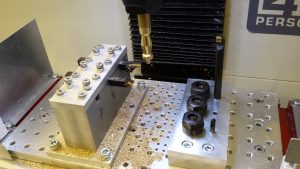I haven’t been completely idle while on holiday …
After I decided to buy a Tormach milling machine I had debate whether to go for the 440 or the 770. This confusion was based on available workshop space and to a lesser extent on cost. I also did not have a feel for the total cost of not just the items I needed to buy but also what the total package would cost when it landed on my driveway. In the UK we pay VAT on not just the goods but also the delivery cost.
To help my thinking I put together a spreadsheet on Excel that split out the basic machine parts and then had a common section showing all the accessories I would need. This totaled everything up in USD and I then did a conversion to GBP at spot rate and then added VAT and duty factors for UK import.
This sheet helped my enormously and once I had all the key prices loaded from the Tormach site I could do ‘what if’ calculations to fit my budget.
I was recently contacted by another potential buyer of a Tormach and I sent him the sheet to help his thinking process. For anyone else thinking of buying either in the US or an overseas country I thought the sheet might help so I have spent some time cleaning it up and and I attach the new version below.
Simply put a quantity of each item in the column associated and see the impact of your shopping list at the bottom, either as a 440 or a 770. Clearly the sheet could be extended to a 1100 if that takes your fancy. (Don’t forget to check the current pricing from the Tormach site by searching on the product code shown on the sheet).
Excel – Tormach mill costing
Don’t forget you will always need one more TTS collet than you have ordered …..
Similar or related subjects : –
- Notepad ++ for GCode Editing
- Local power USB switching circuit
- Tormach PCNC440 X Axis limit switch repair
- Experiences CNC machining Aluminium Composite Material (ACM)
- Enclosure finally added to my Tormach PCNC440
- CNC Work Reference Centring using Mushrooms
- Clough42 Electronic Leadscrew Project Implementation Notes
- Floating pressure foot for the CNCEST3040T mini milling machine
- Probes and Haimer Taster Modification
- Arc and Circle I and J code calculator for GCode cutting paths






